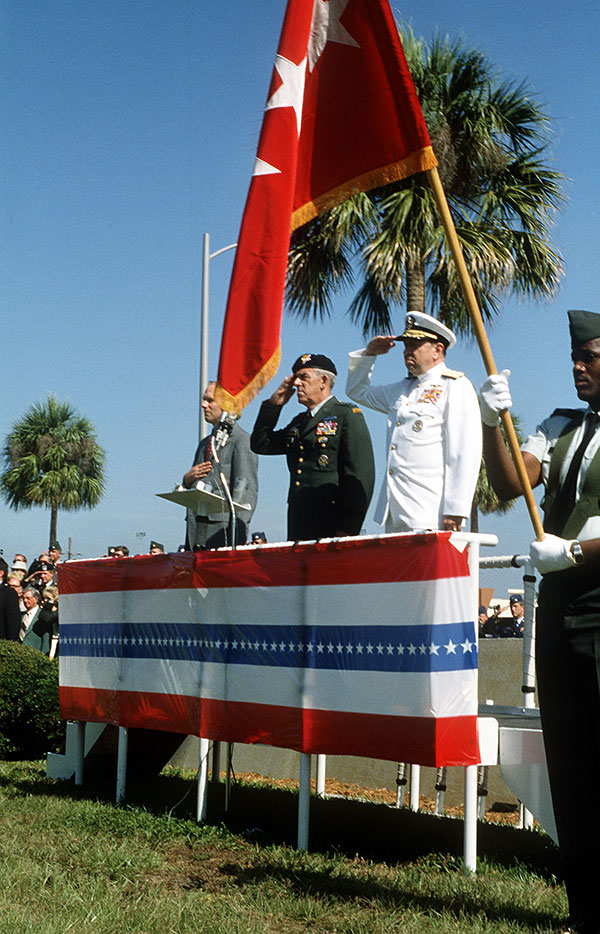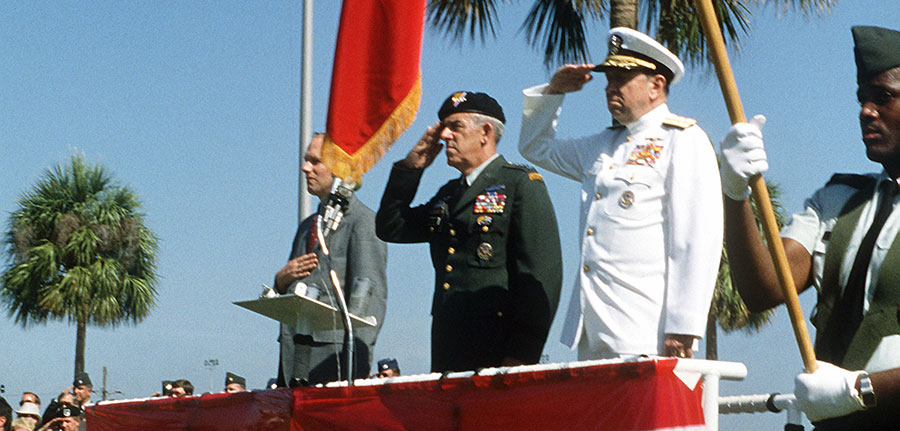BIO
The U.S. Army Special Operations Command honors the life and legacy of Gen. James J. Lindsay, who died 5 August 2023 at the age of 90.
Lindsay had strong ties to Fort Bragg, N.C., formerly known as Fort Bragg, where he served multiple assignments with the 82nd Airborne Division, XVIII Airborne Corps, and in 77th Special Forces Group (SFG). He was the first commander of U.S. Special Operations Command (USSOCOM) and was instrumental in the development of the Airborne and Special Operations Museum in Fayetteville, N.C.
Lindsay, a Special Forces and Ranger-tabbed officer, had a distinguished career lasting more than 38 years. It began when he enlisted in the Army in 1952. He was commissioned as an Infantry Officer in 1953. His first assignment was as Platoon Leader for Company G, 325th Airborne Infantry Regiment, Fort Bragg in 1954, followed by two assignments with the 77th Special Forces Group.
After completing Russian language training at Monterey, California, he served in multiple Military Intelligence positions before returning to Fort Bragg and the Infantry in 1961 as Commander of Company B, 1st Airborne Battle Group, 503d Infantry, 82d Airborne Division. In 1964, then-Major Lindsay took the role as Battalion Advisor, Airborne Brigade, Military Assistance Command for his first tour in Vietnam. Lindsay deployed to Vietnam twice more as part of the 9th Infantry Division, earning the Distinguished Service Cross for heroism in 1968.
The citation, in part, reads: “After two days of tracking the enemy, Colonel Lindsay accompanied his battalion as it was inserted by air into the flank of the communists. Immediately upon landing, his men were brought under extremely heavy automatic weapons and small arms fire from a nearby woodline. Moving from position to position under the hail of bullets, he directed his troops’ fire and, once fire superiority had been gained, led an assault into the hostile bunker complex which destroyed sixty of the fortifications and forced the enemy to withdraw. He then entered his helicopter and flew low over the embattled area to direct the encirclement of the foe. Noticing a group of Viet Cong escaping across a small canal which had not yet been sealed off, he stopped them with hand grenades and rifle fire. After returning to the ground, he exposed himself to the vicious enemy fusillade to coordinate return fire which repelled the enemy’s attempt to break the encirclement. While leading a sweep through the woodline early in the morning of 4 June, he surprised three Viet Cong whom he engaged and killed before they could inflict any casualties upon his men.”
From 1971 to 1973, Lindsay served as Secretary Joint Staff, United States Military Assistance Command Thailand/Joint United States Military Assistance Group Thailand, followed by three more assignments with the 82nd Airborne and his promotion to Brigadier General in 1976. From 1981-1983, he was Commanding General (CG) of the 82nd Airborne Division, before becoming the CG of the United States Army Infantry Center, Fort Benning, Georgia (recently redesignated Fort Moore). He would return to Fort Bragg from 1984-1986 as CG, XVIII Airborne Corps. He served as USSOCOM Commander from 1986 until his retirement in 1990. From this position, he advocated for Army Special Operations Forces and supported the establishment of the U.S. Army Special Operations Command as an Army Major Command in December 1989.

